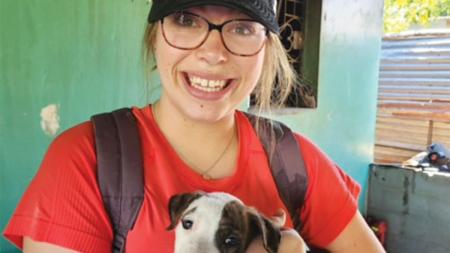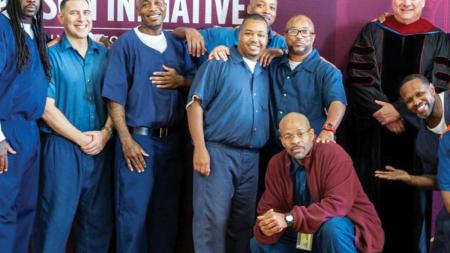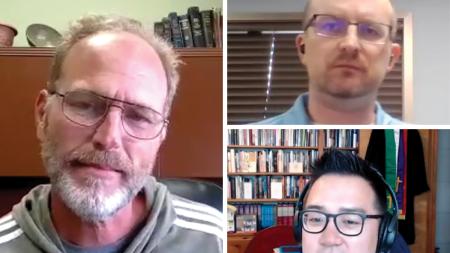Manual Helps Teach Our World Belongs to God

In the final chapter of his new book Come and See, Our World Belongs to God: A Discipleship Manual for Followers of Jesus, Rev. Sid Couperus recalls slicing seed potatoes in half with his father and placing them in the ground.
After covering them with dirt, the Couperuses would wait patiently for shoots to come out of the ground and then for the large leafy potato plants to grow. But only after those plants dried out and died would potatoes be ready to be dug and gathered with a pitchfork.
For Couperus, pastor of Mountainview CRC in Grimsby, Ont., the growth, death, and ripening of the potatoes is a simple metaphor for the Christian life and resurrection of the dead, he writes in a chapter called “The New Creation: It’s Later Than You Think.”
The resurrection, he writes, will be a time in which “never again would the body have to die, because it would be raised a spiritual body that had a lot in common with our natural physical bodies, yet without sorrow, brokenness, and sin. We will be raised imperishable and immortal, entering a new heaven and new earth.”
In the manual, Couperus ties his reflections on the resurrection into the closing lines of Our World Belongs to God, a contemporary testimony of the Christian Reformed Church in North America: “God will be all in all, righteousness and peace will flourish, everything will be made new, and every eye will see at last that our world belongs to God.”
Our World Belongs to God was first released in 1986 as a document putting Reformed teachings into contemporary language and addressing the issues of the day. It was revised in 2008, and in 2017 the synod of the CRC defined the category of contemporary testimony and placed within it also the Belhar Confession, which focuses on the sin of racism.
Couperus has been developing a working version of his manual in youth education classes for several years, teaching the many ways in which Our World Belongs to God looks at topics such as the creation, the fall into sin, the need to become involved in helping to redeem all areas of life, the Lord’s Supper, and the work of the Holy Spirit.
Starting with the first verses of the testimony and running all the way to the end, he offers personal reflections, verse-by-verse explanations of Our World Belongs to God, activities to help students better understand what they are learning, questions for discussion, and suggested readings.
“I have been teaching this discipleship manual [in revised versions] every year for the past 10 years. I taught it in my previous congregation in Trinity CRC in Abbotsford, B.C.,” he said.
“My target audience is grades 11 and 12,” he said, and a main purpose of the manual is to work toward “helping them make public profession of faith.”
Inspiration for this manual goes back many years, he said, to when he was introduced to a discipleship manual written by Greg Ogden called Discover the Fullness of Life in Christ for Yourself and Others.
“It was so rich in teaching that I decided to invite my elders to meet with me every week [to discuss it], and they took up the challenge. It was 30 chapters, and after working through it a couple of years, I wondered out loud what something from our own Kuyperian world and life view could look like.”
Aware that Greg Ogden was on the faculty at Fuller Theological Seminary, Couperus decided to work on a doctorate at Fuller. As part of his studies, he began putting together Come and See, Our World Belongs to God.
“I began in 2002 and completed my D.Min. journey in 2009 with Dr. Richard Mouw, one of the original authors of Our World Belongs to God, as my project evaluator.”
Besides its usefulness for students in high school, the manual can be used to teach new people coming to faith or returning to the faith who are looking to better understand Christian teachings, as well as to help to build stronger relationships with others.
In addition, the manual is for church leaders and young adults and college students looking to integrate faith with learning. It can also be used by small groups meeting to nurture faith formation, Couperus said.
“It would be fascinating to include some of these people in each discussion group: a leader, student, newcomer, and long-time member in the faith. Intergenerational groups could do well to grow together and invest in each other’s lives through the journey,” he said.
“Word is slowly getting out, and I am more than willing and open to meeting with, Skyping with, and connecting with churches, pastors, youth leaders, and networkers to explain each of the components of the study.”
Couperus is especially pleased by the book’s cover -- a photograph taken by his son 10 years ago. It shows a single drop of water dripping from a canoe paddle. In the background is a mountainous landscape reflected in the surface of a lake, a reminder of the upside down kingdom of Jesus, where “whoever wants to be great among you must be your servant, and whoever wants to be first must be your slave” (Matt. 20:26-27).
Syd Hielema, team leader of the CRC’s Faith Formation Ministries, said that observances of the 500th anniversary of the Reformation last year spurred renewed interest in the teachings and theology coming out of that period of church history.
“The CRC's Our World Belongs to God: A Contemporary Testimony is a more recent addition to that rich heritage, and it provides a strong, comprehensive overview of a Reformed worldview.”
In light of this, Hielema said, “This study guide engages this resource deeply in a way that builds community for those who study it together, and it integrates worship, learning, and service in lovely ways.”


